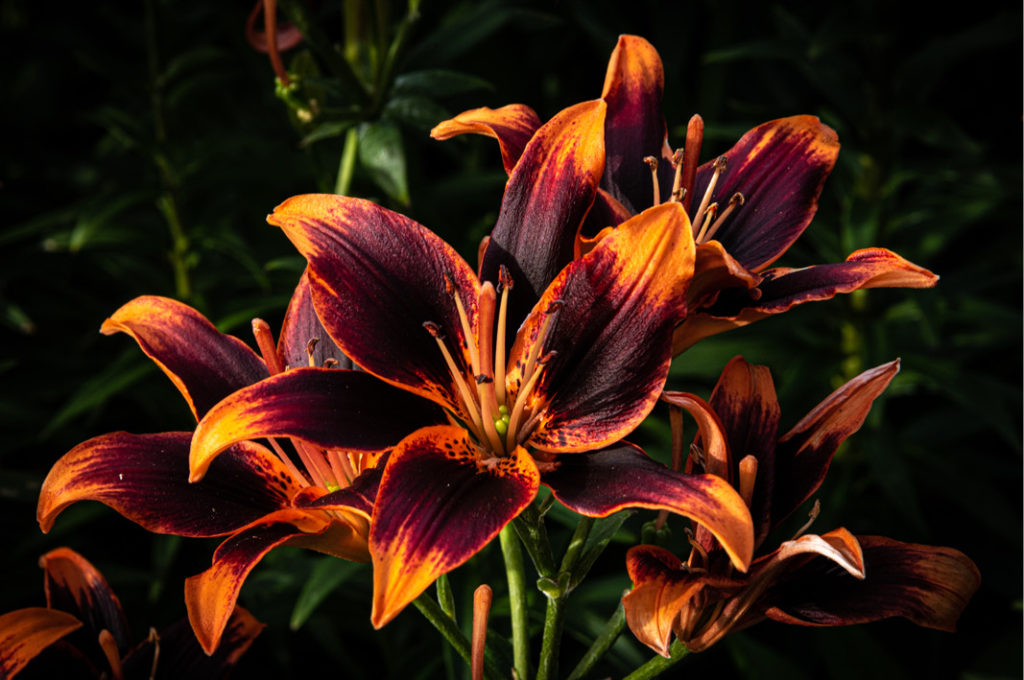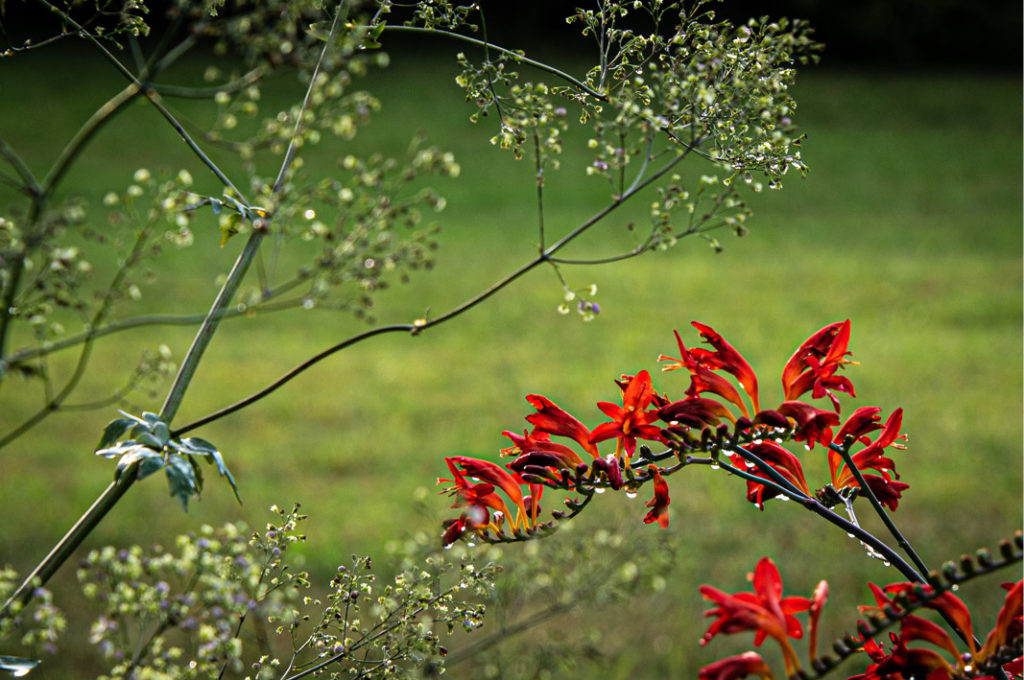June 2022

“June is bustin’ out all over!” So goes the refrain of the Rodgers and Hammerstein’s tune from the Broadway musical Carousel. For weddings, Father’s Day, high school graduations, and now the annual celebration of emancipation from slavery, June brings the most beautiful weather of the year.
Mother Nature has outdone herself early this June with temperatures in the mid-70s to low 80s, breezy, nearly cloudless skies, and low humidity in the U.S.’s mid-Atlantic region, providing perfect growing conditions for ornamental plant gardeners. June is arguably the horticultural highlight of the gardening year.
June means a profusion of color
In my Lewes, Delaware garden, the 4-by-20-foot rectangular bed at the rear of the house shows off its kaleidoscopic complexion right now. Golden-tipped ‘Forever Susan’ lily buds with their reddish-brown petals unfold at each end, next to stands of magenta spikes of perennial sage (Salvia), while buttery yellow California poppies (Eschscholzia) explode across the bed’s middle. A huge mound of bronze fennel already reaches four feet as it heads to its ultimate seven-foot height.
On either end of the bed, airy flower bud stalks of meadow rue (Thalictrum) already top my 6-3’ frame. One of these beauties sits next to a clump of Crocosmia ‘Lucifer,’ whose leaves harbor a bulge that promises in a few weeks to metamorphose into clusters of fiery red flowers held five feet high on wiry stems. White blazing stars (Liatris), bright yellow daylilies (Hemerocallis), annual rust-throated yellow gloriosa daisies (Rudbeckia), along with the six-foot tall dwarf white crape myrtle (Lagerstroemia) wait in the wings for their July debut.
What a feast for the eyes!
Weather’s vagaries play garden havoc
This past fall and winter proved difficult for many garden denizens, and our colder than usual recent spring completed the weird weather patterns. Garden beds in the front of the house particularly suffered. They are exposed to winds and salt air coming from the Delaware Bay and the canal.
Some plants flowered at times different from their normal habit. Instead of their usual month-long bloom spread, all the elegant blue and yellow Baptisias bloomed at once, lasting for only two weeks.
Other plants were stunted this spring, producing fewer blooms, and normally hardy individuals lost the survival battle and disappeared. Two Penstemons failed to emerge; the remaining three, usually a showy three feet tall flower spike with pink-tinged white blossoms, topped out around two feet, with paltry floral displays. A handsome stand of wild phlox suffered a similar fate.
An abnormally warm November 2021 encouraged roses to continue to grow late into autumn, while December’s sudden harsh, cold days froze the tender shoots before they had the chance to “harden off.” A gardening friend lost nine of two dozen newly planted rose bushes. Ouch!

A garden is never finished
Making a garden is an ever-evolving process. Certain plants don’t survive; maybe they didn’t have the best growing conditions for their needs. More assertive species crowd out those that appreciate more room. Others are downright invasive, and these garden thugs require eradication. (I guess I didn’t read the fine print on the label.)
I must admit my disappointment with these gardening failures doesn’t last too long. They provide excuses to investigate new plants coming on the market and visit garden centers to buy replacements. It’s a joyous activity for a plant addict.
“Horticulture is the slowest of the performing arts,” an experienced and wise gardener once said. I see the garden as an unfinished work of art. I like it that way. It keeps me creating, it keeps my hands in the soil and directly connected to nature, and it keeps me in wonder. And every so often, a garden bed produces a perfectly spectacular show, like this year.
Thanks, June.

